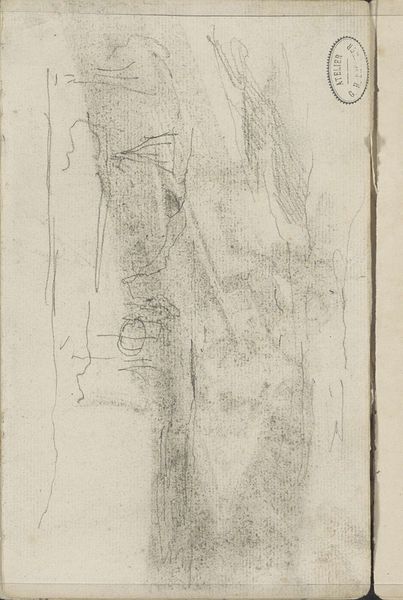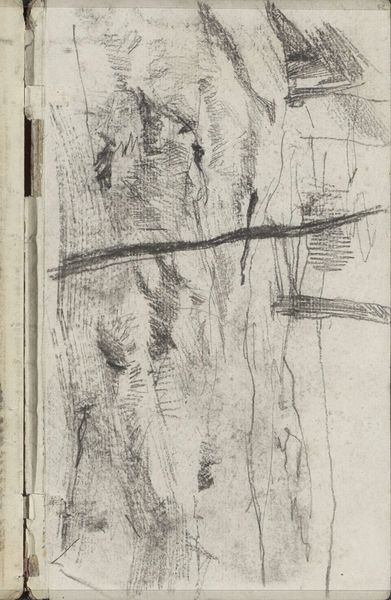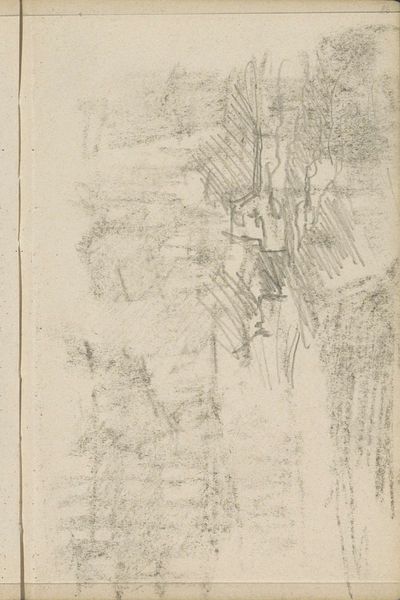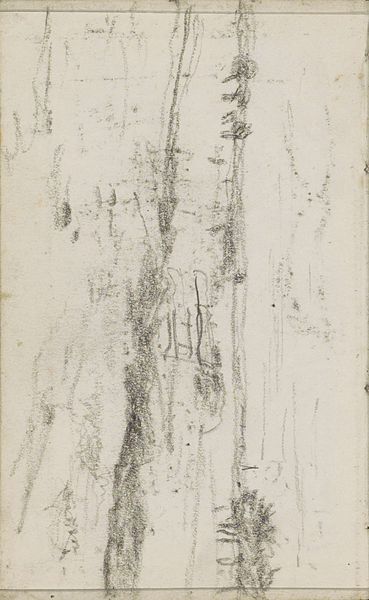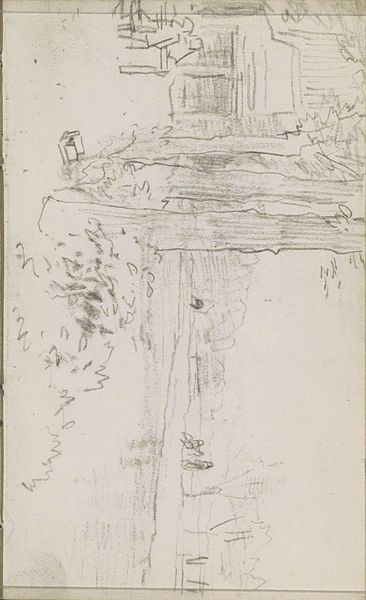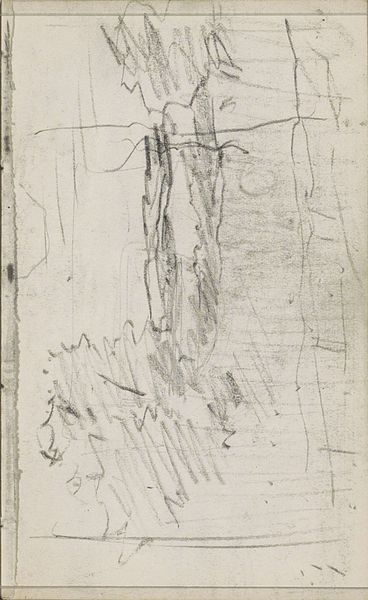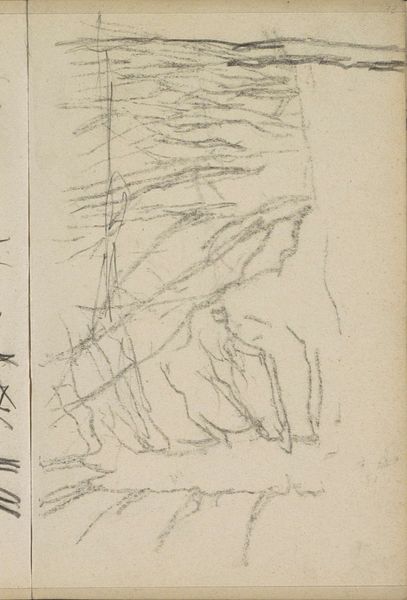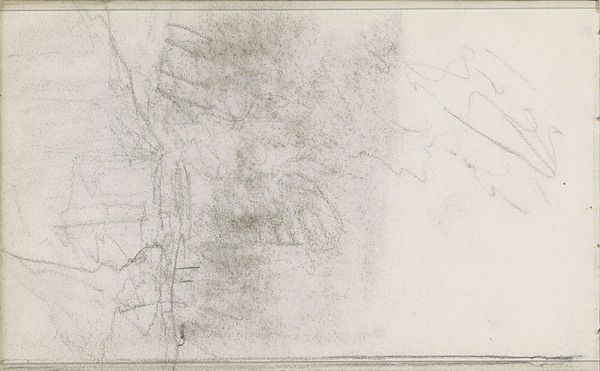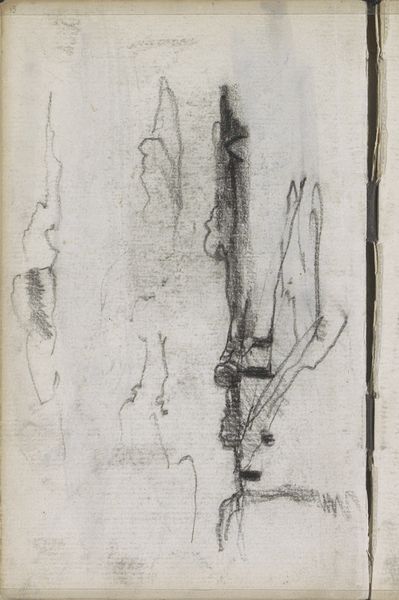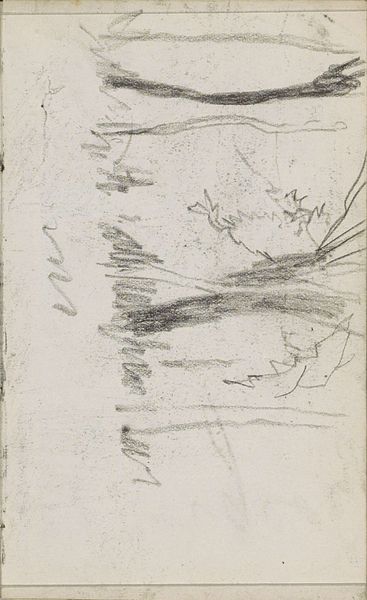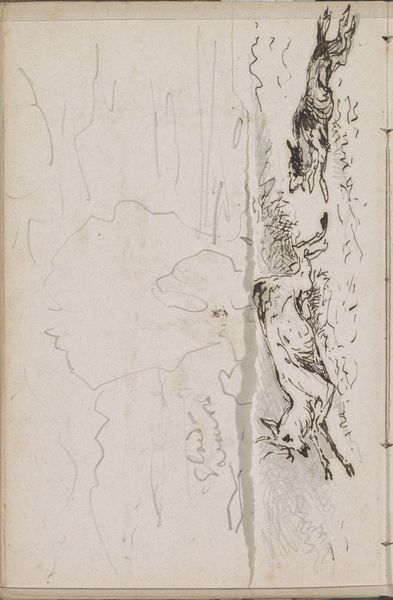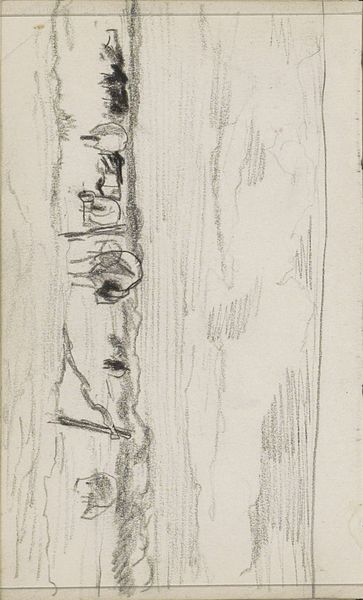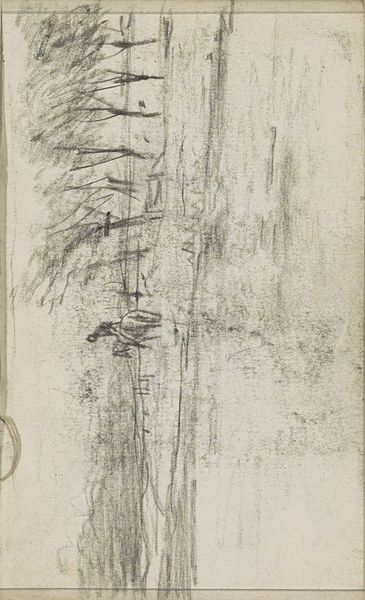
drawing, paper, pencil, charcoal
drawing
impressionism
pencil sketch
landscape
charcoal drawing
paper
pencil
charcoal
realism
Copyright: Rijks Museum: Open Domain
Curator: Welcome! We're standing before "Heuvellandschap met struiken," or "Hill Landscape with Bushes," created between 1848 and 1888 by Anton Mauve. It's currently housed here at the Rijksmuseum. Editor: Immediately, I'm struck by the starkness of the image. It feels like a snapshot of solitude, sketched in almost monochromatic simplicity. What’s compelling is how the sparse application of pencil and charcoal creates such an evocative, almost barren landscape. Curator: Indeed. Let's delve into that materiality. The work relies heavily on pencil and charcoal on paper. Consider the relative ease of access to these materials during the mid-19th century; they were widely available for artists. This suggests Mauve was perhaps less concerned with the preciousness of his materials and more interested in the act of recording. We can see that this piece is very much about the labor, almost utilitarian approach, to capturing this moment of being in the landscape. Editor: Absolutely, and that approach resonates. The sketch becomes a form of visual shorthand, reflective of an individual encountering, experiencing, and translating their surroundings in a period defined by emergent industrialization and urbanization. We have to contextualize this artwork in a time of enormous upheaval. The move toward Realism also emphasizes an engagement with observable facts as opposed to idealizing landscapes or painting from grand historical narratives. It's a potent artistic choice that underscores the social context. Curator: I agree that Mauve's focus seems intensely immediate and observational. Looking at how he layered pencil strokes to define form suggests this wasn't simply about recording, but rather it was about understanding, the structure and texture of the landscape itself. Editor: Precisely, and this is so linked to social history as people navigated new terrain literally and metaphorically during a period of seismic shifts in what art meant to them. I see themes around rural and landscape protection taking place simultaneously. There is resistance taking place by painting something raw and natural against that modernization. Curator: Fascinating. We can really think about how Mauve engages in his own practice. A deeper look at how those tools function here becomes less of an objective record, and is rather transformed into a meditation on materiality. Editor: Ultimately, the work serves as a reminder of how our artistic engagement with the natural world inevitably speaks volumes about societal change. Curator: I will say, studying the way landscapes manifest and become accessible—even political—is fascinating. Editor: Indeed. And I walk away contemplating Mauve’s methods but also the moment it captured in art history.
Comments
No comments
Be the first to comment and join the conversation on the ultimate creative platform.
